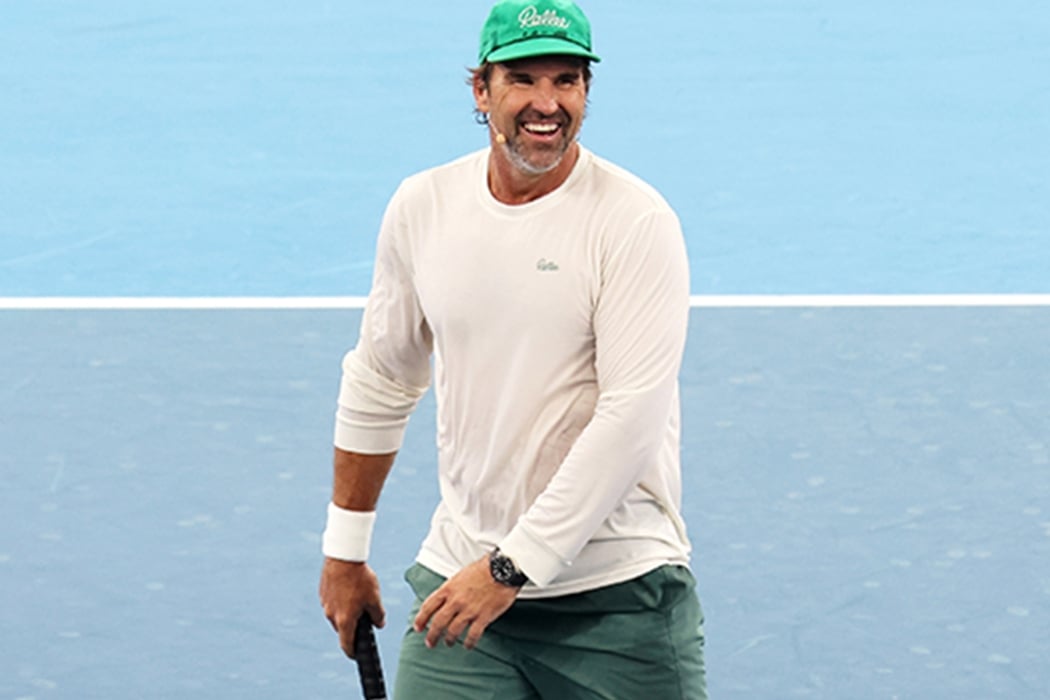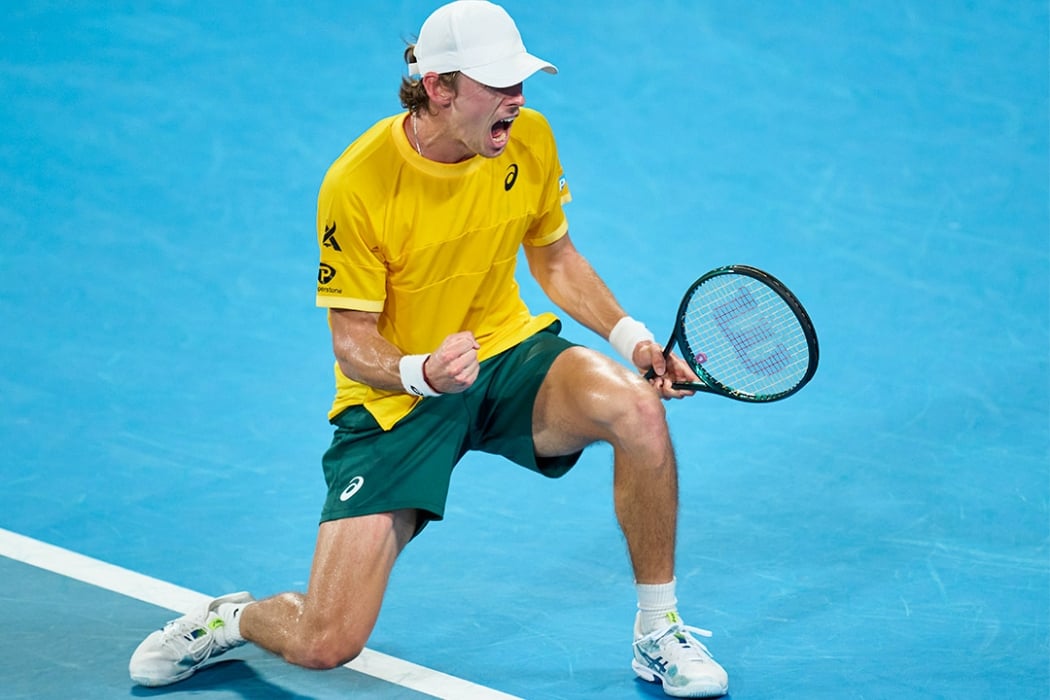It’s been 20 years since Leyton Hewitt, now 43, faced former world No.1 Marat Safin for the Australian Open men’s title. No Australian man has advanced to the final of his home Grand Slam since.
DISCOVER: The Sit-Down podcast
His victory came despite an unfavourable lead-up he can still vividly recall.
“I had the toughest draw from the very first round that I’d ever had in a Grand Slam,” he told The Sit-Down podcast.
“Every single match I had tough opponents and in those particular rounds you’d probably have expected them all to be second week of a major. So, it felt like I was playing this epic match every second day, and obviously my matches never went that quick either, so they felt like long, drawn-out battles.”
Hewitt admits he had momentum on his side that year, having won in Sydney in the lead-up. Being spurred by an entire nation cheering his name in the stands or pausing rowdy summer house parties to turn the volume up on the telly and watch him contributed to that forward propulsion.
“I certainly embraced that, and I think you can feel it,” he says.
But the task that faced Hewitt then – and which has not been repeated – was no less daunting. His adversaries ranged from Safin and Andy Roddick to a Spanish teenager called Rafael Nadal, who months later went on to win the first of his 14 French Open titles.
“I had to play Rafa in the round of 16, and normally you’d be playing him in quarter, semi or finals of a Grand Slam,” Hewitt says. “That was a day match that went the distance - five sets as well - so I felt like I was playing all these massive matches and ended up in the final.”
It’s not the final, however, that stands out most in Hewitt’s mind. It’s the match before that against Roddick, which commentators at the time succinctly summarised.
“Fourteen hours on court before tonight,” they said. “We wondered was there going to be enough energy in the tank. He answered that loudly and without question.”
Earlier, against a young Nadal, Hewitt had felt physically stronger than his opponent by the fourth set and, he says, ran away with the match in the fifth. His encounter with Roddick was also physically bruising though most memorable for what it meant.
“I guess in the end, when you come so close, the last match you win to get into the final, so the semi-final win against Andy Roddick, and actually I had to come back from a set down in that match, and the second and third sets were extremely tight as well,” he recalls.
“Just the satisfaction of getting over the line in that match to know that I’d given myself a chance to play on the last Sunday at the Australian Open [was memorable].”
Hewitt reached his home Grand Slam final 17 years after compatriot Pat Cash finished runner-up to Mats Wilander in 1988. It raises the question: Why so many years between Aussie appearances in the final fight for the Norman Brookes Challenge Cup? And who will next answer the call?
Tennis, Hewitt acknowledges, has changed since that last Sunday in January 2005 when he was on centre court. This year, it was his teenage son, Cruz, who was carrying the family name. The 16-year-old competed in qualifying, where he was knocked out in the first round, having posted pictures of a hit with world No.1 Jannik Sinner on social media.
“Certain parts of it I guess it doesn’t feel that long ago and then there’s other times when it feels the game keeps going to new levels all the time and it does feel like a long time ago,” Hewitt said.
Cruz’s team is hopeful of taking advantage of his height – he is eight centimetres taller than his father - and building a heavy serve. Then there is also Alex de Minaur, who Hewitt has recently backed for a shot at the title.
Could the ‘Demon’ answer the call?
“Absolutely,” says Hewitt. “Alex has cemented himself as a top 10 player.”

